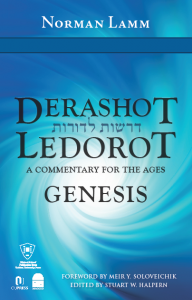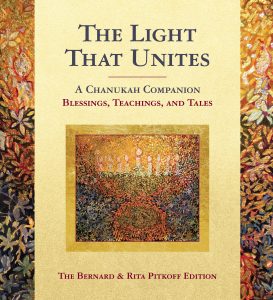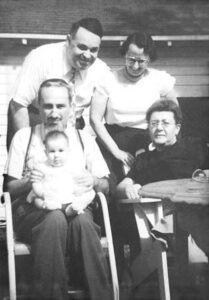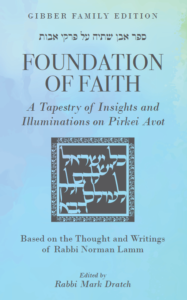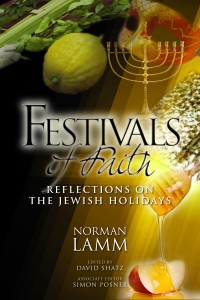Excerpted from Rabbi Shmuel Goldin’s Unlocking the Torah Text – Devarim, co-published by OU Press and Gefen Publishers
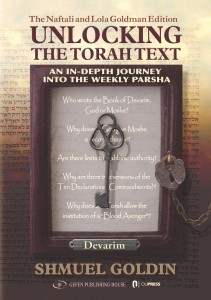 Why Not?
Why Not?
Context
As the curtain rises on Parshat Va’etchanan, Moshe recounts his unsuccessful pleas to God to reverse the divine decree prohibiting him from entering the land of Canaan:
And I beseeched God at this time, saying: “My Lord, God, You have begun to show Your servant Your greatness and Your strong hand.… Let me now cross and see the good land that is on the other side of the Jordan, this good mountain and the Lebanon.”
But God turned angrily against me for your sakes and He did not listen to me; and God said to me: “It is too much for you! Do not continue to speak to Me concerning this matter. Ascend to the top of the cliff and raise your eyes westward, northward, southward, and eastward, and see with your eyes, for you will not cross this Jordan.”
Questions
The tragedy of Moshe’s fate, the fulcrum upon which the entire book of Devarim turns, continues to haunt us across the centuries. This humble, reluctant leader, who has patiently and painstakingly brought his people to the very edge of their dreams, will, as a result of divine mandate, not realize those dreams with them.
Why does God reject Moshe’s supplications? Is Moshe’s sin so great that he must be denied forgiveness? Are the gates of prayer and repentance truly closed to our most sainted leader? If so, what hope have we that God will hear our prayers?
We have previously noted the struggle of the commentaries to identify the exact sin of Moshe and Aharon at the scene of Mei Meriva, the waters of strife, where God issues His decree concerning the fate of these great leaders. The suggested possibilities for Moshe and Aharon’s failure include deviation from God’s instructions, unwarranted anger against the nation, assumption of credit for a divine miracle, and more (see Bamidbar: Chukat 3, for a full discussion).
Whatever the catalyst for God’s verdict against Moshe at Mei Meriva, however, why can’t that verdict be set aside now?
Approaches
-A-
Deeply troubled by God’s continuing rejection of Moshe’s pleas for forgiveness, numerous rabbinic sources suggest that God is actually unable, as opposed to unwilling, to forgive Moshe. These authorities note the use of the term lachen (therefore) in God’s original verdict at Mei Meriva. According to Midrashic tradition, the presence of this term invariably indicates that an oath has been enacted. At the scene of Mei Meriva, God actually swears that Moshe and Aharon will not enter the land. This divine oath, once taken, cannot be abrogated.
Building on this approach, the Sifrei suggests that Moshe’s entreaty to God at this time is based upon a misapprehension of the extent of God’s original vow. Once Moshe sees that he has been allowed to participate in the battles for the conquest of the Transjordan, he assumes that the divine oath decreeing his fate has been abrogated and that he will now be allowed to participate in the subjugation of Canaan, as well. God, however, informs him that the vow remains in place and that Moshe’s entry into the land remains prohibited.
The Da’at Zekeinim Miba’alei Hatosafot offers a poignant Midrashic play on God’s rejoinder to Moshe, “Rav lecha, it is too much for you.” Departing dramatically from the pshat of the text, the Tosafists note that the words rav lecha can be interpreted to mean “[Moshe,] you have a master.” The Tosafists postulate that, in the face of God’s rejection of his pleas, Moshe argues: Master of the universe, please release Yourself from Your vow – as You have released me from my vows, in the past. God responds: Moshe, rav lecha, you have a master, Someone above you Who can release you from your vows. I, in contrast, have no master. No one, therefore, can annul the vows that I take upon Myself. They must remain in place.
-B-
Other authorities focus on Moshe’s puzzling claim, “God turned angrily against me for your sakes.” This statement mirrors an equally troubling comment made by Moshe in Parshat Devarim where, in recounting the sin of the spies, he states, “With me, as well, did God become angry because of you, saying, ‘You, too, shall not come there [into the land of Canaan].’ ”
Can it be that Moshe, at these critical moments, tries to evade responsibility for his own past failures? Why would God reject Moshe’s pleas “for the sake of the Israelites” or “because of the Israelites”?
This puzzle is solved, the Abravanel argues, if we accept his claim that the events at Mei Meriva do not truly determine the fate of Aharon and Moshe. As previously noted, the Abravanel maintains, contrary to the apparent evidence of the text, that these great leaders are actually punished for earlier offenses: Aharon for his involvement in the sin of the golden calf and Moshe for his participation in the sin of the spies (see Bamidbar: Chukat 3, Approaches A). In each of these cases, the actions of these great leaders are well intentioned; and yet in each case they inadvertently contribute to the national disasters that ensue.
God, therefore, calibrates His responses carefully. In order to protect the reputation of both Moshe and Aharon, He does not punish them immediately, together with those guilty of intentional rebellion. He instead waits for them to commit an intentional sin, however minor, in order to punish them for their original transgressions. When Moshe deviates from God’s commandment at Mei Meriva, by striking the rock instead of speaking to it, God seizes the opportunity to exact retribution upon these leaders for their previous, more substantial failings.
Now, as he recounts his unsuccessful attempts to overturn God’s decree, Moshe turns to the nation and declares: I am being punished “for your sake.” Because of your flawed reaction to the report of the spies, I must now pay the price for my initial involvement in that tragic episode.
-C-
Moving in a different direction, other commentaries suggest that Moshe is forbidden from entering the land at least in part because of the powerful effect that his presence would have upon the people’s ultimate fate. According to these authorities, this great leader literally suffers “for the people’s sake.”
The Sforno and the Kli Yakar, for example, maintain that Moshe wants to prevent, through his towering presence and personal involvement in the conquest of Canaan, any possibility of the nation’s eventual exile from the land. Moshe’s plan, however, runs counter to God’s intentions. God knows that, in the future, the people are destined to sin and that their ultimate exile will be both unavoidable and necessary. He therefore ensures that the conquest of Canaan takes place only after Moshe’s death, under the weaker leadership of Yehoshua. Consequently, the Israelites’ continued possession of the Land of Israel will not be assured but will forever remain dependent upon their own merits.
-D-
Combining aspects of the approaches of the Abravanel, on the one hand, and of the Sforno and Kli Yakar, on the other, the Malbim makes a revolutionary claim. God’s decree concerning Moshe is not the result of any sin on this great leader’s part at all. Moshe’s fate is instead sealed by the failings of the nation. Under God’s original plan, the Israelites were to conquer the land of Canaan under Moshe’s continuing leadership. Moshe’s very involvement would have resulted in a miraculous chain of events. No physical battles would have been fought, as God would have miraculously destroyed the nation’s enemies before them. Moshe would have supervised the building of a Temple destined to stand in perpetuity. And, finally, the messianic era would have been reached. The realization of these miracles, however, remained dependent on the nation’s continuing faith in God…
When the nation, through the sin of the spies, tragically demonstrates itself to be unworthy of God’s supernatural intervention, God has no choice but to ensure that Moshe will not enter the land. He decrees that the generation of the Exodus will perish in the desert, clearly excluding only Yehoshua and Calev (the two spies who withstood the evil counsel of their colleagues) from the decree. For their part, Moshe and Aharon are to share the fate of the rest of their generation.
One last chance for redemption, however, remains. If the next generation, the generation that matures in the wilderness, can prove the strength of its commitment to God, the decree sealing Moshe and Aharon’s fate can yet be reversed. These great leaders will be able to lead the nation into the land and all of the promised miracles will still unfold.
These final hopes, however, are dashed at the scene of Mei Meriva. There, once again, as they “gather against Moshe and Aharon,” the people prove unworthy of God’s trust. Moshe, in addition, affected by the turmoil, misses the opportunity to fully sanctify God’s name by speaking to the rock. Consequently, the original decree against Moshe and Aharon is reaffirmed and raised to the status of a divine oath that cannot be subsequently reversed. Moshe and Aharon will perish “for the sake of ” and “because of ” the people.
-E-
One final approach to Moshe’s contention that his prayers are rejected “for the people’s sake” can be offered by reinterpreting, yet again, the events at Mei Meriva. Adapting the insights of Rabbi Harold Kanatopsky, a brilliant teacher and my community rabbi during my teenage years, we have previously suggested that Moshe’s failure at Mei Meriva consists of an inability to transition from the leadership of one generation to the leadership of the next (see Bamidbar: Chukat 3, Approaches H).
The first generation of Israelites with whom Moshe deals, the generation of the Exodus, relates to God only through the primitive emotion of fear. When, therefore, shortly after the Exodus, this generation finds itself without water at a location known as Refidim, God commands Moshe to speak to the people in the only language that they will understand. Strike the rock, He commands, and let the Israelites recognize the power of their heavenly master.
Forty years later, however, at Mei Meriva, Moshe stands before a generation that has come to relate to God through the more mature dimension of love. God therefore commands Moshe: Take the staff. Show the people that you can use it, but that you deliberately will not. Instead, speak to the rock and, in doing so, “speak” to the people. Demonstrate to them, at this critical moment, that the power of love is infinitely stronger than the power of brute force.
Moshe, however, slips…
Confronted again by the bitter complaints of the Israelites, he flashes back to Refidim. He sees before him not the Israelites of the day, but their parents and grandparents of yesteryear. And in that one fateful instant, as Moshe lifts his staff to strike the rock, he fails to transition with his people from one generation to the next, from one relational level to another. This failure seals his fate. He and Aharon (who makes no move to stop his brother) will remain forever part of their generation, consigned to perish in the desert without entry into the land. “For the sake of the people,” Moshe cannot enter the land. A new generation needs a new leader – one who will be able to transition with his people in their march towards a glorious future.
-F-
The above interpretations, however, create an opening for a powerful question. If Moshe’s fate is sealed “for the sake of the nation,” because his leadership would somehow compromise the people’s destiny, why can’t he enter the land as a common man? This humble leader has already requested that God appoint a successor in his stead and, at God’s command, has publicly appointed Yehoshua as that successor. Surely Moshe would now agree to join in the conquest of Canaan under the stewardship of his trusted student. Why doesn’t God simply pass the mantle of leadership to Yehoshua without insisting on Moshe’s death in the Transjordan?
The Mechilta imagines a powerful conversation in which this argument among others, is actually raised by Moshe to God: Master of the universe, when You initially decreed my fate You stated: “Therefore you shall not bring this congregation to the land…” Since I cannot bring the people into the land as a king, please allow me to enter with them as a commoner.
God’s response, the Midrash continues, is short and to the point: A king may not enter [the land] as a commoner.
Elaborating on this Midrashic approach, the Abravanel suggests that God’s declaration to Moshe in Parshat Va’etchanan, “Rav lecha, it is too much for you…,” can be reinterpreted as a rhetorical question. Rav lecha? Would it really be appropriate, God asks Moshe, for Yehoshua to teach while you sit and watch? Would it really be appropriate for Yehoshua to be your teacher (rav) and master? Having risen to the grandeur of leadership, Moshe cannot now descend from its heights.
The poignant picture painted by the Midrash and the Abravanel highlights the powerful challenges that often emerge at times of personal transition and change. When an individual must step aside from a specific life arena and allow someone else to “take his place,” the questions often abound.
What can I hold onto; what must I let go? How will I feel when he does things differently? Can I stay, or must I leave? How much space does my successor need in order to be his own man?
Through the rabbis’ eyes, we watch Moshe struggle with these questions after over forty years of extraordinary personal investment and sacrifice. As he does so, our own potential struggles come to light, as well.
-G-
Finally, in a telling observation elaborated upon by many later authorities, the Talmud overturns our original assumptions concerning the opening narrative of Parshat Va’etchanan. From the point of view of the Talmudists, the text does not emphasize God’s rejection of Moshe’s prayers, but, rather, His acceptance of those prayers – at least, in part:
The power of prayer is greater than the power of good deeds – for no one was greater than Moshe in good deeds, yet he was only answered through prayer. As the text relates: “Do not continue to speak to Me concerning this matter. Ascend to the top of the cliff [and raise your eyes]…”
Here, then, is a very different take on the results of the dialogue between God and Moshe. Moshe’s prayers are answered, after all. His words do have an effect, as God relents. Although this great leader will still be prohibited from entering Canaan, he will now be allowed to view the land from afar. Sometimes the answers God provides to our prayers are painted in shades of gray, rather than in black or white.
Point to Ponder
Three powerful ancillary lessons emerge from the rabbinic conversation surrounding Moshe’s interchange with God at the beginning of Parshat Va’etchanan.
1. Our word is our bond. The suggestion that God may be bound by the strictures of His own vows underscores the seriousness with which we should view our own spoken commitments. If an almighty deity will not
stray from the path determined by His word, how careful must we be to fulfill the verbal obligations that we take upon ourselves?
2. It’s not all about us. The contention that Moshe’s fate is decreed, at least in part, for the sake of others sensitizes us to the fact that an individual’s destiny is determined not only by his own needs but by the valid
needs of others, as well. As we have previously noted (see Bereishit: Noach 4, Approaches A), this idea is dramatically underscored during the Covenant between the Pieces enacted by God with Avraham at the dawn of Jewish history. In predicting the eventual return of Avraham’s descendents to the land of Canaan, God states: “And the fourth generation will return here, for the iniquity of the Emorites will not be complete until then.” You will not be able to acquire the land of Canaan until the indigenous inhabitants deserve to lose it.
There are times when what is “best” for us is not “best” for those around us. God will factor our competing needs and rights into the equation as He determines our respective destinies.
3. It’s never too late to pray. The proposition that Moshe changes God’s mind through prayer marks this incident as one of a number of occasions in the text where Moshe’s prayers seem to sway God’s judgments. This
phenomenon, however, highlights a fundamental philosophical problem. How can an all-perfect God be moved to “change His mind” by the words of man? God is, by definition, not capable of error. Whatever He decides
is correct, or He would not decide it. What is the mechanism by which such prayer works?
We have noted before (see Bereishit: Toldot 3, Approaches A) that, according to some authorities, the roots of this phenomenon can be traced to the words that launch Jewish history. God’s initial promises to the patriarch
Avraham include the phrase “And you will be a blessing.”22 The Midrash interprets this phrase to mean, “Blessings are given to your hand. Until now they were in My hand. I blessed Adam and Noach. From this time on, you
will bless whom you wish.”
By granting man the power to bless, God withdraws and deliberately limits His own power. As part of a divine partnership agreement with humanity, God will respect the words spoken by man and reckon with them when He makes his decisions. Man thus acquires the power of blessing and prayer. God Himself grants effectiveness to our prayers, both on behalf of ourselves and for the welfare of others. Other authorities suggest that the effectiveness of prayer and repentance in swaying God’s judgments can be viewed from an entirely different perspective. Prayer, these scholars argue, transforms the supplicant. An individual who engages in heartfelt prayer and in true repentance emerges from the experience a different person than he was before. In effect, therefore, the subject of God’s original decree no longer exists. God has not changed His mind; man has changed himself.
Whether as a mechanism for changing God’s mind or as an experience through which a supplicant changes himself, prayer remains, for the Jew, a tool that never loses its potential effectiveness. “Even if a sharp sword lies upon his neck,” the Talmud maintains, “an individual should never refrain from [asking for God’s] mercy.”
While we recognize that God’s answer to our requests may well, at times, be no, Moshe’s poignant supplications at the beginning of Parshat Va’etchanan remind us that it’s never too late to pray.
 Going Home
Going Home
